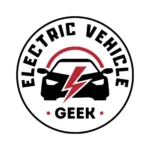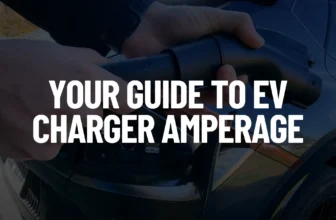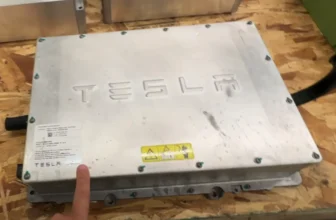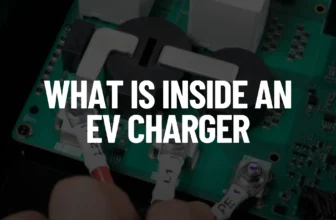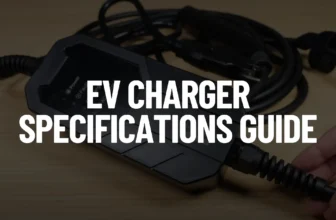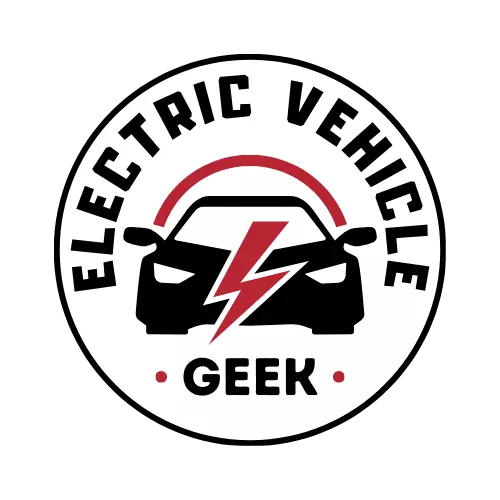As the world embraces renewable energy to combat climate change, electric vehicle (EV) owners increasingly explore the possibility of charging their cars using solar energy.
In this comprehensive guide, we’ll explore how integrating a solar photovoltaic (PV) system with your EV charging setup can transform your home energy use. We’ll cover the essential components of a solar PV system, how it works, and what you need to get started. Additionally, we’ll delve into the role of battery storage, including its benefits and impact on your energy management.
Whether you’re curious about the environmental benefits, cost considerations, or practical aspects of solar EV charging, this guide will provide you with all the information you need to make an informed decision.
Benefits of Solar EV Charging
Lower Carbon Emissions
Electric vehicles have already significantly reduced their carbon footprints. You take another step towards environmental sustainability by charging your EV with solar energy, relying on clean and renewable power.
Reduced Electricity Bills
Amid rising living costs, adopting a solar EV charger allows you to reduce electricity bills. Generating your solar power means less reliance on the grid, translating to substantial savings over time and providing a long-term return on investment.
Increased Property Value
According to New research from CGS Associate Professor Yueming ‘Lucy’ Qiu in Nature Sustainability, Installing an electric vehicle charger at home has already been recognized as a value-added proposition, contributing to an increase of up to 3.3% and, on average, by over $17,000 in property value.
The positive correlation between solar panels and increased home values is well-established. According to a study by Zillow, solar panels are reported to increase property values by 4.1% on average. Combining solar panels with an electric vehicle charger creates a powerful synergy that enhances your sustainability efforts and significantly elevates your property’s market value, making it a wise investment.
Grid Stability
Charging your EV with solar power enables you to go ‘off-grid,’ reducing strain on the conventional power grid and contributing to overall grid stability.
Home solar EV charging systems offer a promising avenue for enhancing grid stability by leveraging electric vehicles (EVs) as dynamic contributors to the renewable energy landscape. In this sustainable paradigm, EVs serve a dual purpose by storing excess energy generated from solar panels during the day and releasing it when demand peaks or renewable energy production wanes.
This day-night energy storage capability ensures a steady and reliable power supply, mitigating disruptions caused by fluctuations in renewable energy generation.
The synergy of energy storage systems with EV charging infrastructure further amplifies the positive impact on grid stability. This integration fortifies individual homes against power disruptions and collectively contributes to a resilient and stable grid. Vehicle-to-grid (V2G) integration takes this further, allowing bidirectional electricity flow.
When equipped with V2G capabilities, EVs draw power from the grid and contribute excess energy back into it. This revolutionary approach actively involves EVs in grid stability, supporting renewable energy integration and reducing dependence on traditional energy sources.
Implementing energy management solutions associated with home solar EV charging optimizes demand response, ensuring intelligent energy flow alignment with renewable energy availability. Beyond contributing to grid stability, these solutions yield cost savings by efficiently utilizing renewable energy and minimizing electricity expenses. The overall environmental benefits further underscore the viability and sustainability of this integrated approach.
What You Need for Solar EV Charging
A well-designed solar EV charging system requires a strategic combination of key components as shown in the Solar EV charging circuit diagram below:
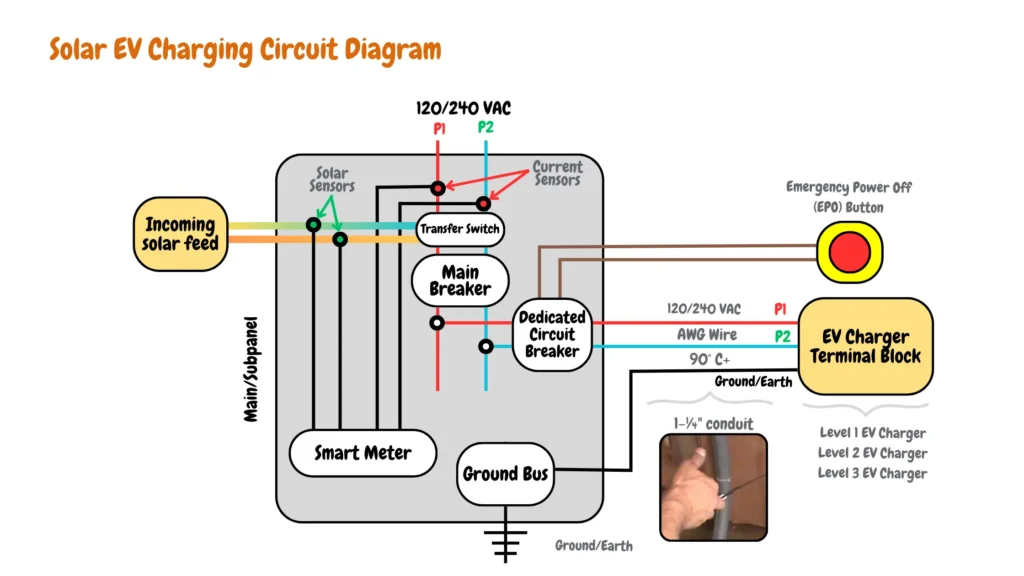
- Power Distribution and Safety:
- Electrical Panel: An electrical panel acts as your EV charging system’s control center. It houses essential components like circuit breakers for individual protection, a smart meter (optional) for energy monitoring, and grounding bars for safety. Interconnection devices (optional) like transfer switches might also be included for seamless grid and solar power switching.
- Ground Bus: Ensures proper grounding throughout the system.
- Main Breaker: Provides primary electrical protection for the entire circuit.
- Dedicated Circuit Breaker: Safeguards the EV charging circuit.
- Emergency Power Off (EPO) Button: Enables immediate system shutdown for emergencies.
- AWG Wire & 90°C+ Rated Conduit: Conducts electricity safely and efficiently.
- Energy Management:
- Incoming Solar Feed: Connects the solar array to the system.
- Solar Sensors: Optimize solar panel performance based on environmental conditions.
- Transfer Switch: Seamlessly switches between grid and solar power.
- EV Charging Smart Meter: Monitors and tracks energy consumption and production.
- Current Sensors: Provide real-time data on current flow.
- Charging Options and Flexibility:
- Level 1, 2, or 3 EV Charger: Select the charging speed that aligns with your needs.
- Energy Sources:
- Solar PV System: The heart of the Solar EV charging system is the solar PV system, which converts sunlight to usable AC power through solar panels and an inverter.
By carefully selecting and integrating these components, you can create a customized solar EV charging solution that maximizes efficiency and environmental impact.
Solar PV System
The foundation of a solar EV charging system is a solar PV system comprising solar panels and an inverter. This system converts sunlight into electricity, which is then used to charge your electric vehicle.
Key Components of a Solar PV System
- Solar Panels (PV Modules): The heart of the PV system, solar panels consist of Photovoltaic cells that convert sunlight into direct current (DC) electricity. These cells, often thinner than four human hairs, are crucial in generating the initial electrical charge.
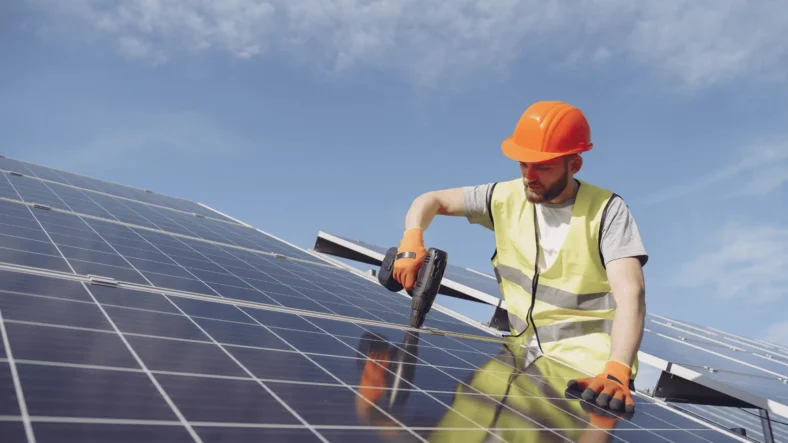
- Inverters: Inverters are essential for transforming the DC output from PV panels into clean alternating current (AC) that can seamlessly power EVs and home appliances.
- Combiner Boxes: These units combine the output from multiple PV panels, streamlining the electrical connections and enhancing system efficiency.
- Wiring: The circulatory system of the PV setup is responsible for transmitting the generated electricity from the panels to the inverter and other components.
- Mounting/Racking: Ensures the proper installation and positioning of solar panels for optimal exposure to sunlight, maximizing energy absorption.
- Battery Banks: While not essential in all PV systems, battery banks store excess energy for later use, providing a reservoir for charging EVs during non-sunny periods.
- Solar Charge Controller: Regulates the voltage and current from PV panels to the battery, ensuring optimal charging without overloading.
How Does a Solar Electric PV System Work?
When sunlight graces the solar panels, the Photovoltaic cells absorb this energy, initiating electrical charges within the cell—these charges, responding to an internal electrical field, set the flow of electricity in motion. The PV module then converts this solar energy into DC electricity, laying the foundation for the subsequent charging process.
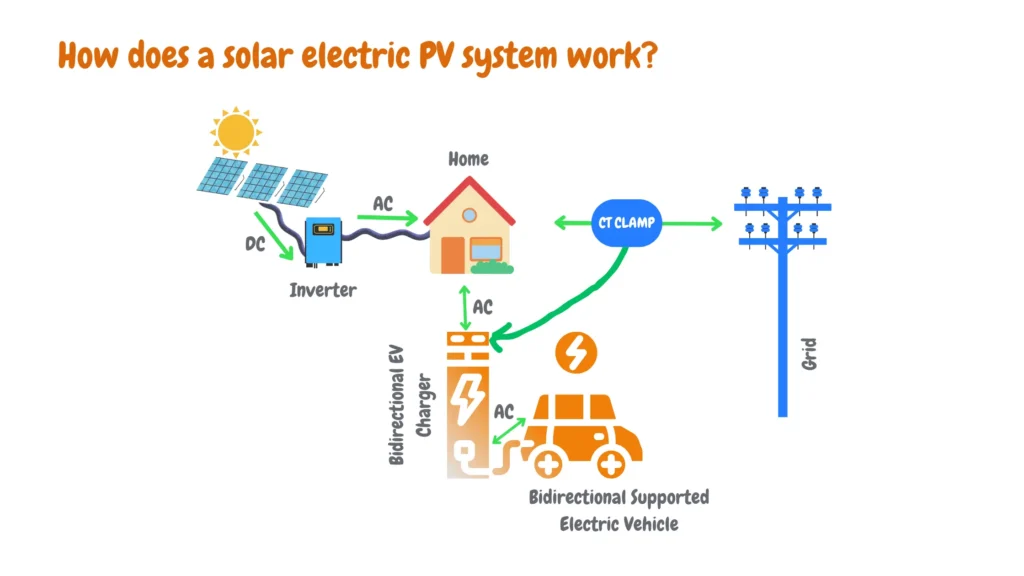
Research Considerations for Solar PV System Purchase
- Energy Needs: Consider home and EV charging requirements to evaluate energy consumption.
- Manufacturer’s Warranty: Assess the length and terms of the warranty to ensure long-term reliability.
- Realistic Price Expectations: Balance cost considerations with the quality and efficiency of the PV system.
- Panel Brand and Certification: Thoroughly research solar panel brands and certifications to make an informed choice.
Electric Car
Any electric vehicle can be charged with solar energy, regardless of the make or model. Compatibility lies in the solar PV system and EV charger.
Dedicated Smart Home EV Charger
A solar-compatible EV charger is essential for efficient solar EV charging. Ensure your EV charger has solar charging capabilities to optimize the process.
Battery Storage (Optional)
In the dynamic landscape of solar EV charging, incorporating battery storage is a pivotal element, transforming how we harness and utilize solar power. The synergy between solar panels and battery storage ensures a continuous and reliable supply of green electricity for your vehicle and home.
Essentials of Battery Storage
Understanding the role of battery storage is fundamental to embarking on the journey of solar EV charging. Solar panels, while efficient during daylight hours, face limitations when the sun sets. This is where battery storage steps in, as a reservoir for the surplus energy your solar panels generate during the day.
The stored energy becomes a readily accessible resource for charging your EV, powering household appliances, and ensuring a seamless energy supply regardless of the time of day.
Choosing the right battery storage system involves considering factors like Depth of Discharge (DoD), the type of battery (lead acid or lithium-ion), and whether the system is AC-coupled or DC-coupled.
DoD determines the maximum energy you should draw from the battery at a given time, ensuring its longevity. AC-coupled systems are common for retrofitting existing solar arrays, while DC-coupled systems are directly linked to new solar panel installations, minimizing energy loss.
Benefits of Battery Storage in Solar EV Charging
The advantages of integrating battery storage into your solar EV charging setup are far-reaching:
On-Demand Access to Solar Energy
Battery storage ensures that the solar energy harvested throughout the day is available whenever needed, overcoming the limitations of relying solely on daylight hours.
Reliable Backup and Uninterrupted Charging
You are storing solar electricity in batteries, safeguarding against low solar generation periods like cloudy days or storms. This guarantees a consistent and uninterrupted charging process for your electric vehicle.
Peak Load Management and Load Shifting
Battery storage empowers you to manage energy efficiently through peak shaving and load shifting. By avoiding grid-linked peaks and strategically using stored energy during off-peak times, you can potentially save more on utility bills.
Bidirectional Charging
Bidirectional EV charging uses solar panels to convert sunlight into electricity that powers a vehicle. bidirectional charging allows electric vehicles (EVs) to send electricity back to the grid or power homes and businesses, as shown in the infographic below.
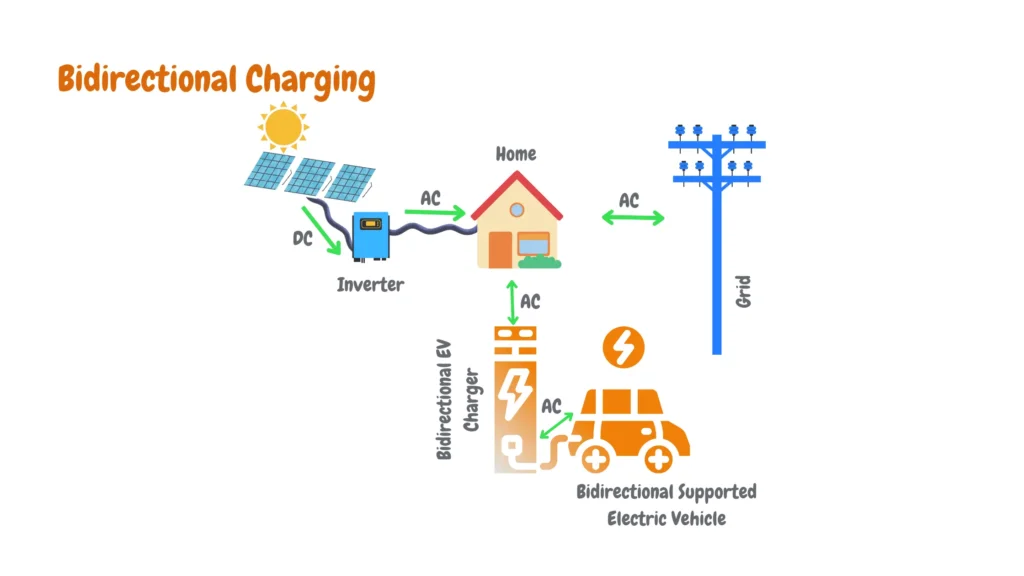
EV owners with a bidirectional EV charging vehicle can use bidirectional EV Chargers combined with solar panels. Bidirectional EV charging using solar panels can be useful for smart grid peak-valley electricity usage, solar power supplementation, and backup power supply.
Reduced Carbon Footprint
Integrating battery storage further contributes to environmental sustainability, reducing your carbon footprint by 7-15%. This aligns with the broader goal of adopting electric mobility for a greener future.
How Does a Solar Car Charger Work?
Charging an EV directly from solar panels is straightforward during daylight hours. Solar panels, made of photovoltaic cells, absorb sunlight and convert it into direct current (DC) electricity. This harvested solar energy is then directed to an inverter, an integral part of the solar photovoltaic (PV) system. The inverter plays a crucial role by transforming DC electricity into alternating current (AC), the type of current used in households.
A solar battery system becomes essential for those who prefer charging their EV overnight. This system stores the excess solar energy generated during the day, ensuring a continuous power supply during darker hours. Tesla, for instance, offers the Powerwall, a sophisticated battery system designed to store solar energy efficiently.
For those with solar panels, a home charging unit and a PV inverter unit are necessary to implement solar panel EV charging at home. The solar charging process involves the solar panels generating electricity during daylight hours, the inverter converting DC to AC for charging, and any unused AC energy stored in the battery system for overnight EV charging.
Determining the Number of Solar Panels
The number of solar panels needed depends on factors such as EV battery size and daily energy consumption. On average, ten solar panels are recommended, with a minimum of eight.
Charging Time with Solar Panels
Charging time varies based on factors like battery size, the number of solar panels, and daily solar electricity production. Solar panels can generate 1kW to 4kW, allowing a smaller EV like the Nissan Leaf to charge in 8-10 hours.
Key Considerations for Solar EV Charging
Weather Conditions
Solar energy generation is optimal during sunny days, but solar PV systems still function during cloudy weather. Charging overnight requires a battery storage system.
High Upfront Cost
The initial cost of a solar PV system can be significant, but the long-term benefits outweigh the investment. Solar EV chargers are competitively priced.
Minimum kW for Solar PV Systems
To charge an EV frequently with solar energy, the solar PV system must generate at least 1.4kW above the household’s power needs.
Conclusion
Investing in a solar electric car charger presents many advantages, from environmental benefits to reduced bills and increased property value. While considerations like upfront costs and weather conditions exist, the overall impact on sustainability and long-term savings makes it a compelling choice for the eco-conscious electric vehicle owner. Embrace the sun’s power and drive into a greener, more sustainable future with solar EV charging.

James Ndungu is a certified EV charger installer with over five years of experience in EVSE selection, permitting, and installation. He holds advanced credentials, including certification from the Electric Vehicle Infrastructure Training Program (EVITP) and specialized training in EV charging equipment and installation, as well as diplomas in EV Technology and Engineering Fundamentals of EVs. Since 2021, James has tested dozens of EV chargers and accessories, sharing expert insights into the latest EV charging technologies.
